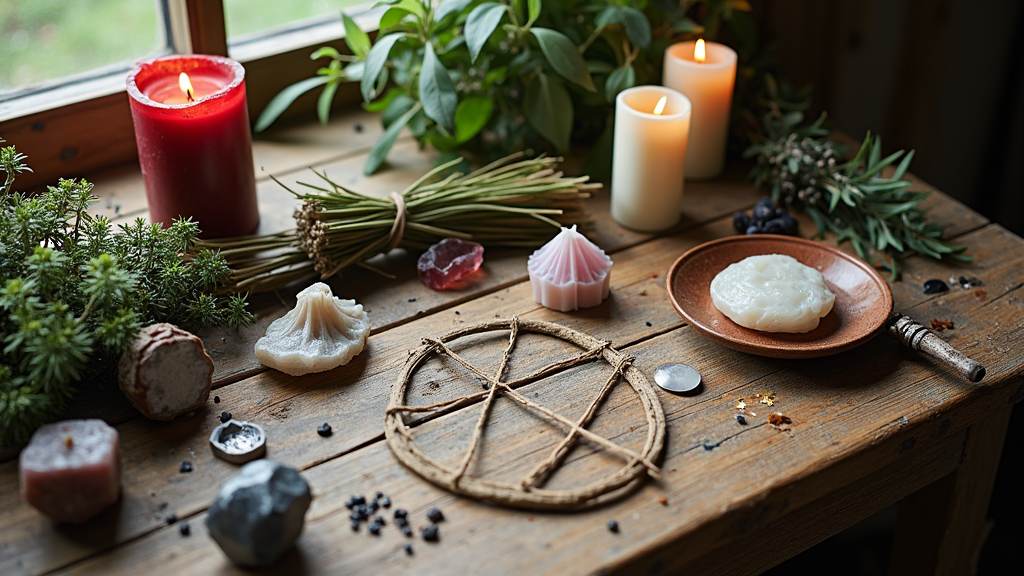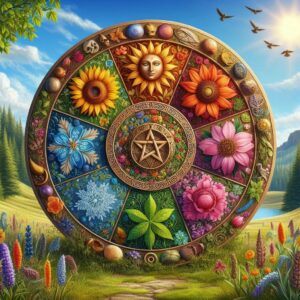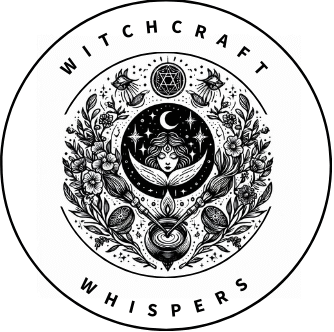Witchcraft is a topic that’s grabbed my attention and curiosity since I first stumbled on it. Movies might toss around images of broomsticks, bubbling cauldrons, or mysterious figures in the woods, but the real world practice is far more rich and diverse. If you’re curious about what witchcraft really is, beyond the stereotypes, this guide is for you.

What Witchcraft Really Means
Witchcraft, at its core, is about working with natural energies and connecting with the world in a way that’s both mindful and intentional. Practitioners (sometimes just called witches) use rituals, spells, or objects from nature like herbs and crystals, to influence changes in their life. Witchcraft is often personal; it’s shaped by things like family traditions, culture, and individual beliefs. There isn’t one “official” version of witchcraft, so what works for one practitioner may look completely different from another.
The study of witches and witchcraft actually has a formal name: witchology. But there’s a broader field known as occult studies that covers witchcraft, magic, and other mystical practices. In academic circles, anthropology and religious studies often get into how witchcraft pops up in different societies and what it means for those communities. There are even museums and scholarly articles dedicated to charting the many paths that witches have charted throughout history.
Historically, witchcraft has been both revered and feared. Ancient cultures often linked witches to healing and wisdom, yet medieval societies sometimes spread fear and misinformation. Today, the general vibe is much more accepting, with many embracing witchcraft as a way to reconnect with nature or find a deeper sense of self. This shift in perception has fueled a renewed curiosity about what it truly means to be a witch in the modern world.
Beliefs at the Heart of Witchcraft

I get a lot of questions about what exactly witches believe in. Honestly, beliefs vary a lot, but there are a few ideas that show up often:
- Everything has energy: Many witches feel that every object—stone, plant, human, or even words—carries an energy that can be put to work or directed.
- Interconnectedness: The idea that people, animals, and the world share connections. Nature is often seen as sacred.
- Personal responsibility: Your actions, especially in spellwork, matter. The energy you put out can come back to you (sometimes called the Law of Return or the Threefold Law).
- Respect for cycles: The moon, seasons, and life cycles are honored or used to guide rituals and spells.
These are just a starting point. Some witches include deities (like gods, goddesses, or spirits) in their practice, while others don’t. Some see witchcraft as a kind of spiritual path, and others as a practical toolkit for life. Witchcraft doesn’t require belief in a particular god or set of rules, though certain branches such as Wicca do have a structured belief system. For others, the craft is about blending old traditions with new ways of living, creating a personalized practice that feels right in today’s world.
Witchcraft vs. Wicca: Clearing Up the Confusion
It’s really common for people to mix up witchcraft and Wicca, but they aren’t the same thing. Here’s what I usually tell folks trying to sort out the difference:
- Witchcraft: Refers to the practice itself, like rituals, spells, and craft. Anyone can practice witchcraft, regardless of what religion (or no religion) they follow.
- Wicca: Is a specific religion that blends witchcraft practices with its own spiritual beliefs, ethical code, and worship of nature and deities (often the God and Goddess). Wicca was created in the mid-20th century and has clear rituals, holidays, and structure. Most Wiccans practice witchcraft, but not every witch is Wiccan.
So, every Wiccan is a witch, but not every witch is a Wiccan. There are a ton of other traditions and paths too, from folk witchcraft to green witchcraft and kitchen witchery. Each has its own approach and traditions shaped by geography, ancestry, and modern adaptation. Some witches focus on healing, some on divination, and others simply on celebrating nature’s cycles together.
Pillars and Foundations of Witchcraft
The building blocks of witchcraft are actually pretty broad, but these are some things I’ve found super important for beginners:
- Intention: This is the core of most spellwork. What you focus your mind and energy on is what drives your magic.
- Ritual: Whether simple (lighting a candle) or elaborate (marking out a magic circle and calling the elements), rituals help to focus your energy.
- Tools: Common items include candles, crystals, cauldrons, wands, herbs, and tarot cards. Not every witch uses all these; pick what feels good to you.
- Natures cycles: Paying attention to the moon, sun, or changing seasons can help guide your spells, rituals, and life decisions.
- Keen observation: Keeping a magical journal (often called a Book of Mirrors) is a handy way to track what works, what doesn’t, and record personal insights.
Foundations also include ethics. Not every path agrees on what’s “okay,” but many witches work by the idea of not causing harm or being mindful of other people’s autonomy and consent in magical workings. This respect stretches to both the people around you and the living world itself, forming a backbone of caring and awareness whatever your path.
Things I Wish I’d Known Before Starting Out

Beginning a practice in witchcraft isn’t about rushing out to buy every candle or crystal in sight. Here are some practical things that help when you’re just starting the adventure:
- Start small: No one needs a fancy altar or rare herbs to get going. Even basic, household items work fine.
- Trust your instincts: If something feels awkward or forced, it’s okay to skip it. The craft is about what feels right for you.
- Keep a journal: Track what you try, what you learn, and how things turn out. It’s the best way to grow. This journal will be the start of your Book of Shadows, by the way.
- Research: There’s a ton of info out there, so taking time to read widely and check sources helps you avoid dodgy advice. Peer-reviewed books or online forums with experienced practitioners can be especially helpful for sorting fact from fiction.
- Respect privacy (yours and others’): Not everyone is cool with witchcraft. Be mindful about sharing until you’re comfortable. Keeping your journal or magical items stashed away can help protect your personal space and practice.
No practice is perfect on the first try. Experimenting, making mistakes, and adapting is all part of the process, and there’s no deadline for figuring things out. Patience and self-compassion are as much a part of the craft as the tools or spells themselves.
Hurdles and How to Approach Them in Witchcraft
Most witches eventually run into a few roadblocks. Here’s a look at some common ones and approaches for moving past them:
- Finding trustworthy resources: Bookstores and the web are flooded with conflicting information. Seek out writers or teachers with solid reputations, and look for reviews or recommendations from experienced practitioners. Public libraries and well-reviewed online courses can be fantastic resources for learning more.
- Fitting practice into regular life: Witchcraft isn’t only for holidays or full moons. Small daily rituals can be just as meaningful as big ceremonies, like brewing intentional tea or taking a mindful walk.
- Managing expectations: Magic isn’t about instant results or flashy effects. Sometimes the results show up in subtle changes, feelings, or new opportunities. Keep an eye out for smaller shifts and signs rather than waiting for big, cinematic outcomes.
- Dealing with skepticism: Not everyone respects witchcraft, so it helps to have ready responses if someone checks in or criticizes out of the blue. Practicing discretion or simply changing the subject can also be good protective strategies.
- Ethical crossroads: Occasionally, a spell or ritual goal will raise questions about whether it crosses a line. Taking a step back, reflecting, and talking to a trusted friend, mentor, or journaling can help you draw your boundaries.
Making Do With What You Have
I started off thinking I had to buy a bunch of special tools. Turns out, a kitchen spoon or a rock from your yard can be just as powerful as storebought items. It’s the meaning and intention you give them that matters most. In fact, making your own tools or finding them in your environment can give your practice more depth and a personal touch.
Privacy and Practice
Keeping your craft private can be tricky, especially in shared spaces. Small, simple rituals or a portable altar (like a box or basket) let you practice without putting everything on display. Online spaces, such as closed groups or anonymous forums, also provide opportunities to share and ask questions without revealing your identity.
Tips For Growing Your Practice
Building skill and confidence in witchcraft takes curiosity and consistency. Here’s some ways I’ve found helpful:
Experimentation: Trying different types of magic, from kitchen spells to meditation, helps you find what clicks. Don’t be afraid to mix in some variety and allow your interests to shift over time.
Learning cycles: Observing moon phases, seasonal changes, and even daily routines connects you more deeply to nature and your own rhythms. This regular observation can also give a boost to your intuition and magical effectiveness.
Community: Online groups, local meetups, or books by experienced practitioners can offer support, camaraderie, and new perspectives. Sharing stories or asking questions helps everyone involved. Teaming up with others, even occasionally, can expose you to new ideas and ways of practicing.
It’s totally normal to feel a bit lost at first, but over time you’ll spot patterns that work for you and can adjust your approach. Remember to stay open to new knowledge and trust your instincts as your adventure continues.
Frequently Asked Questions
What are the beliefs of witchcraft?
Beliefs in witchcraft focus on natural energy, personal intention, interconnectedness, and the sacred nature of the world around us. These beliefs change from person to person, but there’s usually a respect for nature and personal responsibility in actions.
What is the difference between witchcraft and Wicca?
Witchcraft is the practice itself; anyone can do it, for any reason. Wicca is a specific religion that includes witchcraft but adds its own deities and rituals. Not all witches are Wiccan, and not all Wiccans practice the same type of witchcraft.
What are the foundations of witchcraft?
Key foundations are intention, ritual, tools (even if improvised), respect for cycles in nature, and personal reflection—often in a journal or Book of Mirrors. Ethics and personal responsibility play a big part for many witches too.
What is the study of witches called?
The study of witches is formally called witchology. In broader academic fields, a lot of this research falls under occult studies, anthropology, or religious studies.
Jumping Into Witchcraft
The basics of witchcraft open up a world of self-discovery, creativity, and connection; whether you craft spells in the kitchen or meditate under the moon. Everyone’s path is different and that freedom is what makes the adventure so fulfilling.
Exploring witchcraft is about finding practices that support you, add to life, and offer new ways to see the world around you. If you’re curious, that’s all it takes to start. There’s no right pace or set standard—just a willingness to learn, grow, and see what magic feels like for you.
